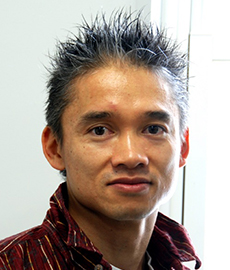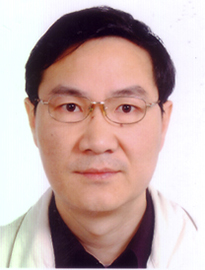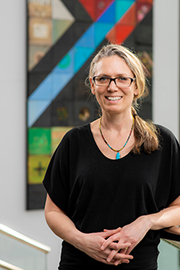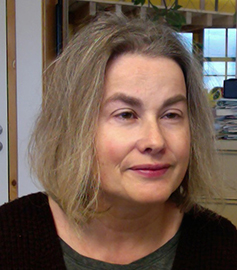IMS Director Candidates for 2019-2021 (Review CV’s and Select THREE)
Amadou Bâ
Professor (Full), University of Antilles (UA)
Guadeloupe (French West Indies)

Amadou Bâ CV and Interests
Full Professor
Teaching in Plant Physiology and Soil Microbiology
Researching in Mycorrhizal Symbiosis
Laboratoire de biologie et physiologie végétales LSTM, UMR113
UFR Sciences, BP. 592, Campus de Fouillole, University of Antilles (UA),
97159, Pointe-à-Pitre, Guadeloupe (French West Indies)
Email: amadou.ba@univ-ag.fr, amadou.ba@ird.fr
Web site : www.senegal.ird.fr/afrinom
MAIN RESEARCH INTERESTS
My main research interests are focused on mycorrhizal symbiosis which link plant roots and soil fungi.
For this, I investigate different models of plant and fungus interactions in tropical and neotropical
agroecosystems. I work on diversity and functioning of ectomycorrhizal fungal populations and
communities by using molecular biology and isotopic methods (natural abundance of stable isotopes
13C and 15C) to identify fungi and to assess plant and fungal exchanges, respectively, in natural
forests.
I also work to understand how arbuscular mycorrhizal fungi can be successfully establish in
orchards, involving molecular genetic monitoring of fungal establishment and persistence after
inoculation, as well as monitoring of the sustainability of symbiotic benefits for crop yield.
I try with my colleagues, through the African Network on Mycorrhiza (AFRINOM) which groups a hundred
members, to strengthen research, encourage cooperation and promote exchange of information on
mycorrhiza in Africa.
MOST RELEVANT PUBLICATIONS
– Bâ AM & Rivera-Ocasio E (2015). Genetic diversity and functional traits of Pterocarpus officinalis
Jacq. trees associated with symbiotic microbial communities in Caribbean swamp forests in relation to
insular distribution, salinity and flooding. Wetlands 35: 433-442.
– Séne S, Avril R, Chaintreuil C, Geoffroy A, Ndiaye C, Diédhiou AG, Sadio O, Courtecuisse R, Sylla
SN, Selosse MA & Bâ AM (2015). Ectomycorrhizal fungal communities of Coccoloba uvifera (L.) L.
mature trees and seedlings in the neotropical coastal forests of Guadeloupe (Lesser Antilles)
Mycorrhiza 25: 547-559.
– Davison J, Moora M, Öpik M, Adholeya A, Ainsaar L, Bâ AM, Burla S, Diédhiou AG, Hiiesalu I, Jairus
T, Johnson NC, Kane A, Koorem K, Kochar M, Ndiaye C, Pärtel M, Reier Ü, Saks Ü, Singh R, Vasar
M & Zobel M (2015). Global assessment of arbuscular mycorrhizal fungus diversity reveals very low
endemism. Science 349: 970-973.
– Geoffroy A, Sanguin H, Galiana A & Bâ AM (2017). Molecular characterization of arbuscular
mycorrhizal fungi in an agroforestry system reveals the predominance of Funneliformis spp.
associated with Colocasia esculenta and Pterocarpus officinalis adult trees and seedlings. Frontiers in
Microbiology 8:1426-1429.
– Ebenye HCM, Taudière A, Niang N, Ndiaye C, Sauve M, Onguene NA, Verbeken A, De Kesel A,
Séne S, Diédhiou AG, Sarda V, Sadio O, Cissoko M, Ndoye I, Selosse MA & Bâ AM (2017).
Ectomycorrhizal fungi are shared between seedlings and adults in a monodominant Gilbertiodendron
dewevrei (De Wild.) J.Léonard, rainforest in Cameroon. Biotropica 49(2), 256-267.
– Hijri M & Bâ AM (2018). Editorial: Mycorrhiza in tropical and neotropical ecosystems. Frontiers in
Plant Science, 9, 308.
– Séne S, Selosse M-A, Forget M, Lambourdière J, Cissé MK, Diédhiou AG, Rivera-Ocasio E, Kodja
H, Kameyama N, Nara K, Vincenot L, Mansot J-L, Weber J, Roy M, Sylla SN & Bâ AM (2018). A
pantropically introduced tree is followed by specific ectomycorrhizal symbionts due to pseudo-vertical
transmission. ISME Journal 12(7):1806-1816.
– Fall F, Le Roux C, Bâ AM, Fall D, Bakhoum N, Faye MN, Kane A, Ndoye I, Diouf D (2018). The
rhizosphere of the halophytic grass Sporobolus robustus Kunth hosts rhizobium genospecies that are
efficient on Prosopis juliflora (Sw.) DC and Vachellia seyal (Del.) P.J.H. Hurter seedlings. Systematic
and Applied Microbiology 42: 232-239.
– Thioye B, van Tuinen D, Kane A, Mania de Faria S, Ndiaye C, Duponnois R, Sylla SN & Bâ AM
(2018). Tracing Rhizophagus irregularis isolate IR27 in Ziziphus mauritiana roots under field
conditions. Mycorrhiza 29: 77-83.
– Thioye B, Sanguin H, Kane A, Mania de Faria S, Fall D, Prin Y, Sanogo D, Ndiaye C, Duponnois R,
Ndao Sylla S & Bâ AM (2019). Impact of mycorrhiza-based ecological engineering strategies on
Ziziphus mauritiana Lam. and its native mycorrhizal communities on the route of the Great Green Wall
(Senegal). Ecological Engineering 128: 66-76.
Tatsuhiro Ezawa
Associate Professor
Hokkaido University

Tatsuhiro Ezawa CV and Interests
Email: tatsu@res.agr.hokudai.ac.jp
Education:
March 1996 Ph.D., Graduate School of Agriculture, Hokkaido University
March 1989 M.Sc., Graduate School of Agriculture, Hokkaido University
March 1987 B.Sc., School of Agriculture, Hokkaido University
Research Positions:
2004 – Present Associate Professor, Hokkaido University
1994 – 2004 Assistant Professor, Nagoya University
1998 – 2000 Research fellow, The University of Adelaide, Australia
1989 – 1992 Researcher, Kyowa Hakko Kogyo, Co. Ltd.
Selected Journal Articles:
- Kameoka, H., Tsutsui, I., Saito, K., Kikuchi, Y., Handa Y., Yamaguchi, K., Shigenobu, S., Ezawa, T., Hayashi, H., Kawaguchi, M. and Akiyama, K. Stimulation of asymbiotic sporulation in arbuscular mycorrhizal fungi by fatty acids. Nature Microbiology, in press.
- Ezawa, T. and Saito, K. (2018) How do arbuscular mycorrhizal fungi handle phosphate? New insight into fine-tuning of phosphate metabolism. New Phytologist 220: 1116-1121.
- Koyama, T., Sato, T., Adachi, K., Tawaraya, K., Sato, S., Hirakawa, H., Yoshida, S. and Ezawa, T. (2018) Dissection of niche competition between introduced and indigenous arbuscular mycorrhizal fungi with respect to soybean yield responses. Scientific Reports 8: 7419.
- Saito, K. and Ezawa, T. (2017) Phosphorus metabolism and transport in arbuscular mycorrhizal symbiosis. In: F. Martin ed., Molecular Mycorrhizal Symbiosis, pp. 197-216, John Wiley & Sons.
- Kikuchi, Y., Hijikata, N., Ohtomo, R., Handa, Y., Kawaguchi, M., Saito, K., Masuta, C. and Ezawa, T. (2016) Aquaporin-mediated long-distance polyphosphate translocation directed towards the host in arbuscular mycorrhizal symbiosis: application of virus-induced gene silencing. New Phytologist, 211, 1202-1208.
Research interest:
-Molecular mechanisms of nutrient delivery and stress tolerance in arbuscular mycorrhizal symbiosis.
-Ecological role of arbuscular mycorrhizal fungi in disturbed and arable ecosystems.
-Tripartite interactions among plants, arbuscular mycorrhizal fungi, and fungal viruses.
Editorial experience:
2015 – Present Editorial board member, The ISME Journal
2011 – Present Section editor, Plant and Soil
2007 – 2011 Consulting editor, Plant and Soil
2009 – 2013 Section editor, Soil Science and Plant Nutrition
Ian Dickie
Professor of Microbial Ecology
School of Biological Sciences, University of Canterbury

Ian Dickie CV and Interests
Professor of Microbial Ecology
School of Biological Sciences
University of Canterbury
Summary
I am an ecosystem ecologist focussing on the development and application of molecular tools to determine the role of mycorrhizal and other fungi in community and ecosystem-level outcomes. I have also applied similar approaches to soil invertebrates, plant communities, bacteria, and oomycetes.
One major focus of my work is the role of mycorrhizas in woody plant establishment, including the invasion of wilding conifers. Our research has shown that trees are largely co-invading with non-native fungi, transforming ecosystem function belowground. I also have a long-standing interest in fungal community ecology, including both deterministic (e.g., niche partitioning) and stochastic mechanisms.
I am an editor for New Phytologist and have previously served on the editorial board of Mycorrhiza and Plant & Soil. I am a project leader in the BioProtection Research Centre of Research Excellence, and a professor in the School of Biological Sciences, University of Canterbury.
Education
Ph.D. in Ecology, The Pennsylvania State University, August 2000.
BS in Natural Resources, University of Michigan, December, 1991.
Recent research outputs
Dickie IA, Boyer S, Buckley H, Duncan RP, Gardner P, Hogg ID, Holdaway RJ, Lear G, Makiola A, Morales SE, Powell JR, Weaver L 2018. Towards robust and repeatable sampling methods in eDNA based studies. Molecular Ecology Resources 18:940-952
Tylianakis JM, Martínez‐García LB, Richardson SJ, Peltzer DA, Dickie IA 2018. Symmetric assembly and disassembly processes in an ecological network. Ecology Letters 21:896-904
Dickie IA, Bufford JL, Cobb RC, Desprez‐Loustau ML, Grelet G, Hulme PE, Klironomos J, Makiola A, Nuñez MA, Pringle A, Thrall PH 2017 The emerging science of linked plant–fungal invasions. New Phytologist 215:1314-1332
Dickie, I. A., Nuñez, M. A., Pringle, A., Lebel, T., Tourtellot, S. G., & Johnston, P. R. 2016. Towards management of invasive ectomycorrhizal fungi. Biological Invasions 18: 3383-3395
Moeller, H. V., Dickie, I. A., Peltzer, D. A., & Fukami, T. (2015). Mycorrhizal co‐invasion and novel interactions depend on neighborhood context. Ecology 96:2336-2347
Dickie I. A., N. Koele, J. D. Blum, J. D. Gleason, M. S. McGlone 2014. Mycorrhizas in changing ecosystems. Botany 92:149–160
86 peer-reviewed publications, h-factor 39, 6024 citations
ORCID: 0000-0002-2740-2128
Google Scholar: tinyurl.com/y4gxbrgv
personal website: https://ecosystemmycology.wordpress.com
Gu Feng
Professor of Mycorrhizal Ecology and Plant Nutrition
China Agricultural University, Beijing, China

Gu Feng CV and Interests
Professor of Plant Nutrition and Mycorrhizal Ecology, College of Resource and Environmental Sciences, China Agricultural University, Beijing, China.
Research and Interests include:
- Interaction between AM fungi and P solubilizing bacteria in hyphosphere.
- Manipulation the role of native AMF propagule in intensive cropping systems.
Selected ten papers in recent five years
1, Zhang L, G Feng, S Declerck (2018) Signal beyond nutrient, fructose, exuded by an arbuscular mycorrhizal fungus triggers phytate mineralization by a phosphate solubilizing bacterium. The ISME J, 12:2339–2351
2, Zhang L, MG Xu, Y Liu, FS Zhang, A Hodge, G Feng (2016) Carbon and phosphorus exchange may enable cooperation between an arbuscular mycorrhizal fungus and a phosphate-solubilizing bacterium. New Phytol, 210 (3):1022-1032
3, Wang F, N Shi, RF Jiang, FS Zhang, Gu Feng (2016) In situ stable isotope probing of phosphorus solubilizing bacteria in the hyphosphere. JXB, 67 (6):1689-1701
4, Zhang L., N Shi., F Wang, TS George, G Feng (2018) Arbuscular mycorrhizal fungi stimulate organic phosphate mobilization associated with changing bacterial community structure under field conditions. Envion Microbiol, 20(7):2639-2651
5, Zhang L, Fan J, G. Feng, Declerck S (2019) The arbuscular mycorrhizal fungus Rhizophagus irregularis MUCL 43194 induces the gene expression of citrate synthase in the tricarboxylic acid cycle of the phosphate-solubilizing bacterium Rahnella aquatilis HX2. Mycorrhiza, 29: 69–75
6, Wang F, M Kertesz, G Feng (2019) Phosphorus forms affect the hyphosphere bacterial community involved in soil organic phosphorus turnover. Mycorrhiza, https://doi.org/10.1007/s00572-019-00896-0
7, Zhang L, J Fan, X Ding, X He, FS Zhang, G Feng (2014) Hyphosphere interactions between an arbuscular mycorrhizal fungus and a phosphate solubilizing bacterium promote phytate mineralization in soil. Soil Biol Biochem, 74:177-183
8, Deng Y, G Feng, X Chen, C Zou (2017) Arbuscular mycorrhizal fungal colonization is considerable at optimal Olsen-P levels for maximized yields in an intensive wheat-maize cropping system. Field Crops Res,209:1-9
9, Mai W, X Xue, G Feng, R Yang, C Tian 2019 Arbuscular mycorrhizal fungi – 15-fold enlargement of the soil volume of cotton roots for phosphorus uptake in intensive planting conditions. Euro J Soil Biol, 90: 31-35
10, Mai WX, R Yang, G Feng, C Tian (2018) Can optimization of phosphorus input lead to high productivity and high phosphorus use efficiency of cotton through maximization of root/mycorrhizal efficiency in phosphorus acquisition? Field Crops Res, 216: 100–108.
Justine Karst
Assistant Professor
University of Alberta, Canada

Justine Karst CV and Interests
Current position: Assistant Professor, University of Alberta, Canada
Main research interests: 1) belowground ecology of boreal forests, 2) plant-fungal interactions, and 3) carbon flow through ecosystems.
Relevant publications (2017-current)
Pec GJ, Scott NM, Hupperts SF, Hankin S, Landhäusser SM, Karst J. Restoration of belowground fungal communities in reclaimed landscapes of the Canadian boreal forest. Accepted by Restoration Ecology May, 2019
Zwiazek J, Equiza M, Karst J, Senorans J, Wartenbe M, Calvo Polanco M. 2019. Role of urban ectomycorrhizal fungi in improving the tolerance of lodgepole pine (Pinus contorta) seedlings to salt stress. Mycorrhiza doi.org/10.1007/s00572-019-00893-335
Birch JD, Lutz JA, Hogg EH, Simard SW, Pelletier P, LaRoi GH, Karst J. 2019. Decline of an ecotone forest: 50-years of demography in the southern boreal forest. Ecosphere https://esajournals.onlinelibrary.wiley.com/doi/full/10.1002/ecs2.2698
Scott N, Karst J, Pec G, Landhäusser SM. 2019. Additive or synergistic? Early ectomycorrhizal fungal community response to mixed tree plantings in boreal forest restoration. Oecologia 189: 9–19
Karst J, Burns C, Cale J, Antunes P, Woods MJ, Lamit LJ, Hoeksema JD, Zabinski C, Gehring C, La Flèche M, Rua MA. 2018. Tree species with limited geographical ranges show extreme responses to ectomycorrhizas. Global Ecology and Biogeography 27: 839–848
Rua MA, Lamit LJ, Gehring C, Antunes P, Hoeksema JD, Zabinski C, Karst J, Burns C, Woods MJ. 2017. Accounting for local adaptation in ectomycorrhizas: a call to track geographical origin of plants, fungi, and soils in experiments. Mycorrhiza 28: 187–195
Pec GJ, Karst J, Taylor DL, Cigan PW, Erbilgin N, Cooke JEK, Simard SW, Cahill, JF, Jr. 2017. Changes in soil fungal community structure driven by a decline in ectomycorrhizal fungi following a mountain pine beetle outbreak. New Phytologist 213: 864–873
Karst J, Gaster J, Wiley E, Landhäusser SM. 2017. Stress differentially causes roots of tree seedlings to exude carbon. Tree Physiology 37: 154–164
Hupperts S, Karst J, Pritsch K, Landhäusser S. 2017. Host phenology and potential saprotrophism of ectomycorrhizal fungi in the boreal forest. Functional Ecology 31: 116–126
Annegret Kohler
Researcher at INRA Grand-Est Nancy
Department of Tree-Microbes Interactions, Ecogenomics of Interactions Lab

Annegret Kohler CV and Interests
Current Position:
Researcher at INRA Grand-Est Nancy
Department of Tree-Microbes Interactions
Ecogenomics of Interactions Lab
Main research interests:
My research is focused on the biology of trees and the associated forest fungi and their role in forest ecosystems. I’m particularly interested in mycorrhizal symbiosis and in characterizing the molecular mechanisms established during development and functioning of this mutualistic interaction, as well as to understand the evolution of symbiotic fungi from saprotrophic ancestors.
During the last 10 years I was involved in many genomic projects and in particular in charge of the transcriptomic analyses within these projects. I’ve published over 50 scientific papers related to mycorrhizal transcriptomics, genomics and tree-microbe interactions.
Most relevant publications:
- Kohler A, Kuo A, Nagy LG, Morin E, Barry KW, Buscot F, Canbäck B, Choi C et al.. (2015) Convergent losses of decay mechanisms and rapid turnover of symbiosis genes in mycorrhizal mutualists. Nat Genet. 2015;47(4):410–5
- Martin F, Kohler A, Murat C, Veneault-Fourrey C, Hibbett DS. Unearthing the roots of ectomycorrhizal symbioses. Nat Rev Microbiol. 2016;14(12):760–73.
- Peter M, Kohler A, Ohm RA, Kuo A, Krützmann J, Morin E, et al (2016) Ectomycorrhizal ecology is imprinted in the genome of the dominant symbiotic fungus Cenococcum geophilum. Nat Commun.;7:12662
- Murat C, Payen T, Noel B, Kuo A, Morin E, Chen J, Kohler A., et al. (2018) Pezizomycetes genomes reveal the molecular basis of ectomycorrhizal truffle lifestyle. Nature ecology & evolution 2 (12), 1956.
- Martino, E., Morin, E., Grelet, G.-A., Kuo, A., Kohler, A., et al. (2018), Comparative genomics and transcriptomics depict ericoid mycorrhizal fungi as versatile saprotrophs and plant mutualists. New Phytol, 217: 1213–1229.
- Martin, F. Kohler A et al. Périgord black truffle genome uncovers evolutionary origins and mechanisms of symbiosis. Nature 464, 1033–1038 (2010).
- Doré J, Kohler A, Dubost A, Hundley H, Singan V, Peng Y, Kuo A, Grigoriev IV, Martin F, Marmeisse R, Gay AG. (2017) The ectomycorrhizal basidiomycete Hebeloma cylindrosporum undergoes early waves of transcriptional reprogramming prior to symbiotic structures differentiation. Environ Microbiol.; https://doi.org/10.1111/1462-2920.13670
- Fochi V, Chitarra W, Kohler A, Voyron S, Singan VR, Lindquist EA, Barry KW, Girlanda M, Grigoriev IV, Martin F et al. (2017) Fungal and plant gene expression in the Tulasnella calospora–Serapias vomeracea symbiosis provides clues about N pathways in orchid mycorrhizas. New Phytologist 213: 365–379.
- Plett JM, Kohler A, Khachane, A., Keniry, K., Plett, K. L., Martin, F. and Anderson, I. C. (2015), The effect of elevated carbon dioxide on the interaction between Eucalyptus grandis and diverse isolates of Pisolithus sp. is associated with a complex shift in the root transcriptome. New Phytol, 206: 1423–1436. doi:10.1111/nph.13103
- Tisserant E, Malbreil M, Kuo A, Kohler A, Symeonidi A, Balestrini R, Charron P, Duensing N, Frey NFD, Gianinazzi-Pearson V et al. 2013. Genome of an arbuscular mycorrhizal fungus provides insight into the oldest plant symbiosis. Proceedings of the National Academy of Sciences, USA 110: 20117–20122.
Jonathan M. Plett
Senior Lecturer; Hawkesbury Institute for the Environment
University of Western Sydney, Australia

Jonathan M. Plett CV and Interests
Email: j.plett@westernsydney.edu.au
Twitter: @FungiDownUnder
Education:
Ph.D. in Plant Molecular Biology. Dissertation title: “Developmental Regulation of Cell Fate and Disease Resistance in Plants” Queen’s University, Kingston, Ontario. Awarded June of 2009.
B.Sc. in Integrated Science (with Highest Honours and recipient of a Senate Medal) Carleton University, Ottawa, Ontario, Canada, 2002.
Research Positions:
Senior Lecturer; Hawkesbury Institute for the Environment, University of Western Sydney, Richmond, NSW, Australia. January 2019-Present.
Lecturer; Hawkesbury Institute for the Environment, University of Western Sydney, Richmond, NSW, Australia. January 2016-2019.
Research Fellow; Hawkesbury Institute for the Environment, University of Western Sydney, Richmond, NSW, Australia. 2012- 2016.
Post-Doctoral Researcher; L’Institut National de la Recherche Agronomique, Champenoux, France. 2009- 2012.
Journal Articles (5 Selected articles only):
- Egidi E, Delgado-Baquerizo M, Plett JM, Wang J, Eldridge DJ, Bardgett RD, Maestre FT, Singh BK. (2019) A few Ascomycota taxa dominate soil fungal communities worldwide. Nature Communications. 10:2369
- Wong JW-H, Lutz A, Natera S, Wang M, Ng V, Grigoriev IV, Martin FM, Roessner U, Anderson IC, Plett JM. (2019) The influence of contrasting microbial lifestyles on the pre-symbiotic metabolite responses of Eucalyptus grandis roots. Frontiers in Ecology and Evolution. org/10.3389/fevo.2019.00010
- Hortal S, Plett KL, Plett JM, Cresswell T, Johansen M, Pendall E, Anderson IC (2017) Role of plant-fungal nutrient trading and host control in determining the competitive success of ectomycorrhizal fungi. ISME Journal. doi:10.1038/ismej.2017.116.
- Plett JM, Martin F. (2015) Reconsidering mutualistic plant–fungal interactions through the lens of effector biology. Current Opinion in Plant Biology. 26:45-50.
- Plett JM, Daguerre Y, Wittulsky S, Deveau A, Melton SJ, Kohler A, Morrell-Falvey J, Brun A, Veneault-Fourrey C, Martin F. (2014) The effector protein MiSSP7 of the mutualistic ectomycorrhizal fungus Laccaria bicolor interacts with Populus JAZ proteins. Proceedings of the National Academy of Science USA. 111:8299-8304.
Awards:
2018: Daniel McAlpine Medal (Australasian Mycological Society)
2017 Peter Goldacre Award (Australian Society of Plant Scientists)
2016 NSW Young Tall Poppy Award (Australian Institute of Policy & Science)
2015 Thomas Davies Fellowship (Australian Academy of Science)
2014 Science and Innovation Award (Department of Agriculture and Water Resources)
Professional Activities and Service:
Associate Editor. Frontiers in Systems Microbiology. June 2013-Present.
Australian Primary Industry Center for Science Education. Volunteer educator, Western Sydney University. July 2014-2016.
Science Outreach Program Coordinator. Queen’s University chapter. September 2006- August 2008.
